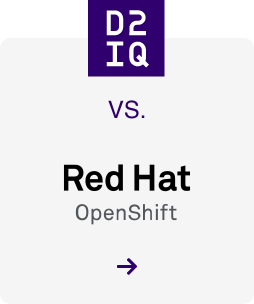![How to Meet Zero Trust Standards [D2iQ + GDIT]](https://assets.d2iq.com/production/uploads/resources/oQszHq5RHjpWqcfIgNfympm9IKJhiIRXl1X7icHZ.png)
How to Meet Zero Trust Standards [D2iQ + GDIT]
As cyber attacks become more frequent and serious, security best practices are shifting from "trust but verify" to "never trust, always verify."
Achieving zero-trust security is a goal set by the U.S. government. The Executive Order on Improving the Nation’s Cybersecurity requires government agencies to achieve specific zero trust security goals by the end of the 2024 fiscal year. Although Kubernetes was initially designed with basic security capabilities, broad and rapid adoption and an increasingly sophisticated threat landscape have made Kubernetes more vulnerable to attacks.
Developers and security experts are now tasked with extending Kubernetes’ built-in security to effectively protect against more complex, volatile and frequent cyber attacks. The previous “trust but verify” approach has often proven ineffective for the complex distributed nature of cloud computing, so Kubernetes security is being elevated to the “never trust, always verify” ideology of the zero-trust model to provide greater protection to organizations.





